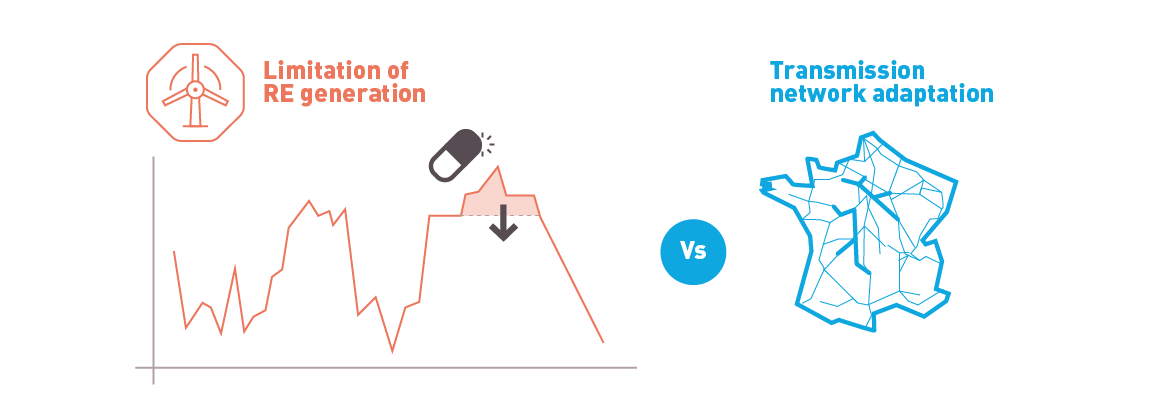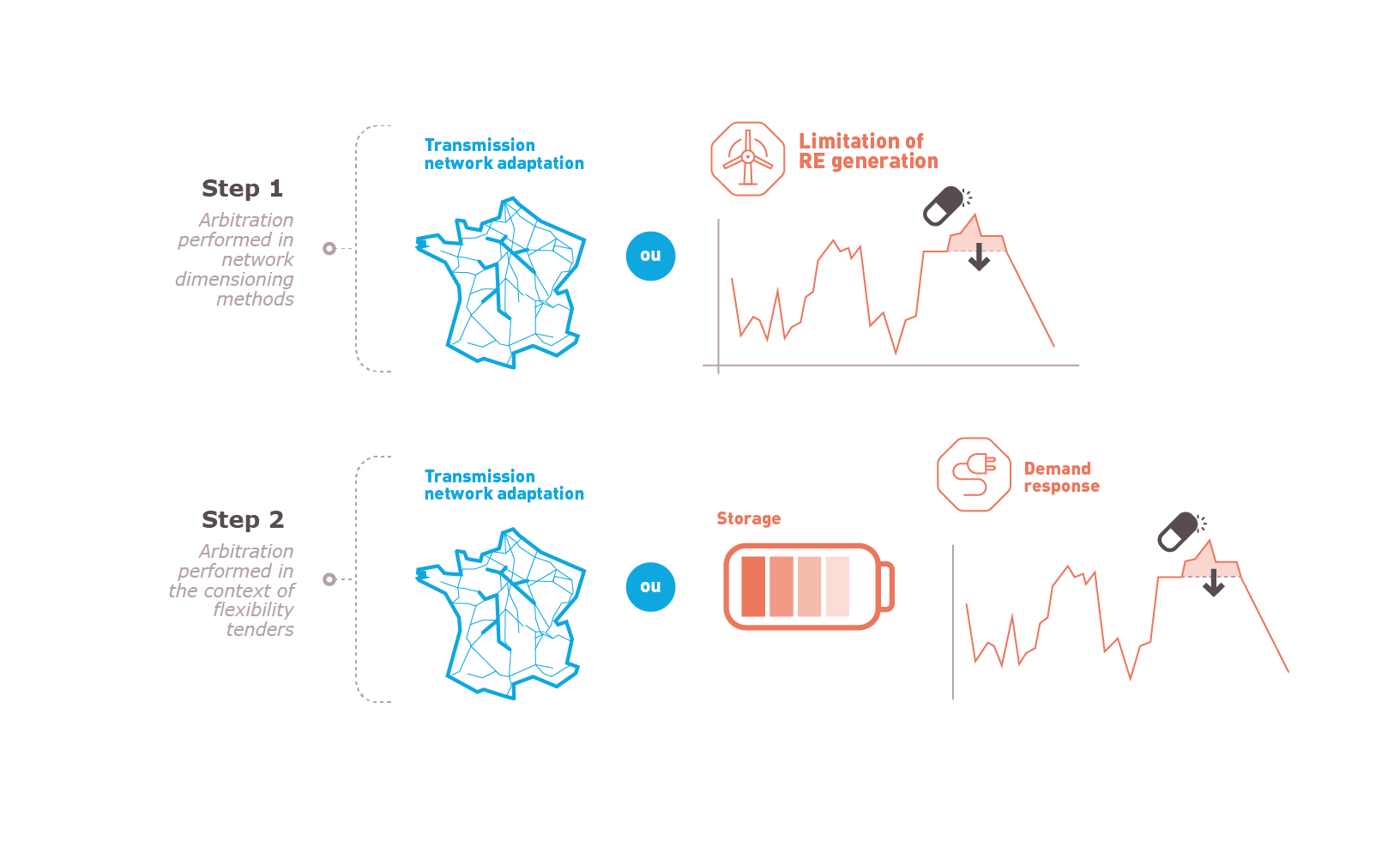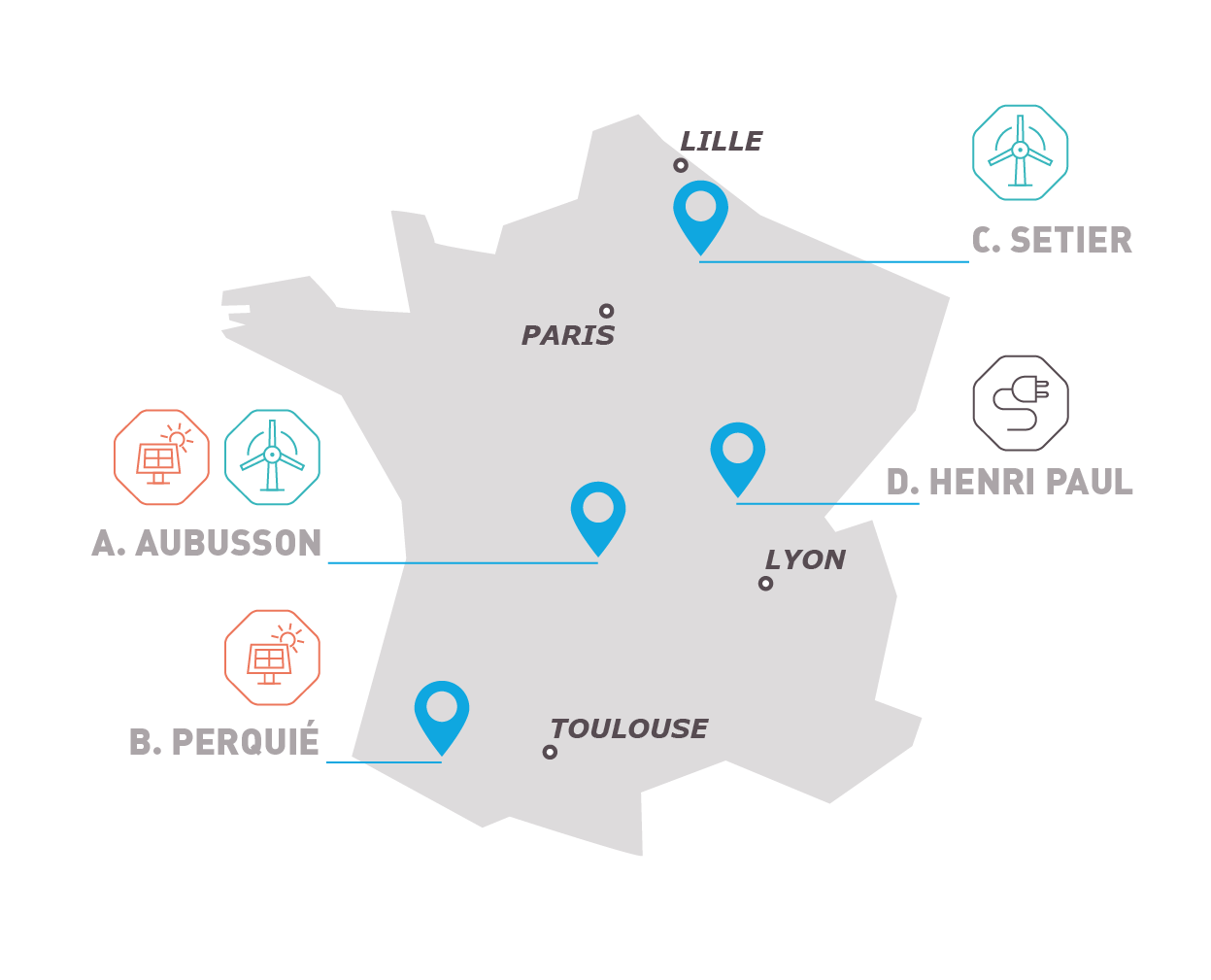Do you have an account?
Why create an account?
After creating an account you will :
- have access to the “favourites” feature,
- be able to download certain data published by RTE,
- have access to forms (PKI certificate, EIC code, Customer questionnaire - KYC),
- have access to notifications.
If you are an RTE customer, feel free to contact your administrator so that he or she can give you access to your company’s services.
Beneficiaries
Storage or demand response capacity operators depending on the characteristics of the zones selected for the experimental tenders.
Context
The energy transition is bringing about profound changes to the power system. RTE is supporting this transition by making adaptations to the network infrastructure that promote the large-scale integration of renewable energies and ensure that a high level of electricity quality is maintained.
RTE is designing these system changes while seeking a technical and economic optimum for the community which integrates social and environmental aspects.
For the dimensioning of the electricity transmission system, RTE already relies on the flexibility of RE generation, by incorporating the option of limiting it from time to time and temporarily when this would prevent the construction of network infrastructure for which the economic interest for the community is not greater than the disadvantages of these caps. This is the principle of optimal network dimensioning, described in the 2019 edition of the 10-year Network Development Plan (chapter "Adaptations").

RTE is currently dimensioning the network taking into account the limiting of RE generation from time to time and temporarily
To further this logic of optimisation, RTE is seeking to complete the panel of solutions taken into account for dimensioning of the network by integrating other flexibilities, such as demand response or storage. These additional flexibilities could, in some cases, represent a technically and economically relevant alternative to the adaptation of the network.
The evaluation of the relevance of storage or demand response solutions and, where relevant, the contracting of the flexibility service will be done through flexibility tenders.
Thus, the combination of the network dimensioning methods already implemented and the flexibility tenders will ultimately help in the dimensioning of the network by integrating the potential contribution of all flexibilities: generation, storage, consumption.

The flexibility tender procedure aims to extend the perimeter of flexibilities taken into account for the dimensioning of the network
This approach is part of RTE’s road map on the participation of flexibilities in congestion management, which provides for:
- The progressive generalisation of the publication of residual transmission constraints following the revision of S3REnR;
- The establishment of a framework adapted to the participation of flexibilities in congestion management;
- The launch of experimental tenders to test, in three to five zones of the network, the use of flexibilities in place of network adaptations.
The remainder of this page specifies the objectives and conditions for these experimental tenders.
Principle of flexibility tenders
Flexibility tenders are intended to pay for the reservation, over a multi-year period, of a flexibility capacity that can be activated in real time by RTE to limit congestion on the transmission system, when this flexibility is a solution for delaying or avoiding network adaptation.
The market participant providing the service commits to:
- The availability of a storage, generation or consumption capacity (depending on the nature of the constraint and the location of the flexibility), over a commitment period (at a defined horizon and for a multi-annual duration) and according to technical characteristics (power, duration, lead time…) fixed contractually;
- The activation of this capacity, at the request of RTE.
The flexibility service provider will benefit from a fixed remuneration for capacity availability (€ for a volume in MWh over a commitment period) and a variable remuneration, depending on each activation (€/Mwh).
The flexibility service may be provided by storage or consumption facilities, insofar as their location allows a significant influence on the structures of the public transmission system identified as being constrained in the experimental tenders.
The characteristics of the flexibility service (location, commitment period, dimensioning in terms of power, energy, activation conditions, etc.) depend on the constraint, and are therefore specific to each of the zones selected for experimental calls for tender.
The service offered by the market participants in the framework of the calls for tenders does not necessarily need to resolve all of the anticipated congestion on the network. However, the economic performance of a flexibility service will be assessed against the total cost including the service proposed by the market participant (fixed + variable share) and the management of residual constraints that would not be resolved by the proposed service. The flexibility service will then be considered competitive if this total cost is less than the total cost of the network adaptation solution, which consists of the costs of network investment and constraint management that would not be solved by the network investment.
During the experimental phase, only one successful tenderer can be selected for each of the zones subject to a call for tenders. The different zones may be awarded to the same winner.
Experimental flexibility tenders: an experiment under consultation
The conception of flexibility tenders for congestion management is the subject of consultation in the framework of the Storage WG, attached to the CURTE market access (CAM) and network access (CAR) commissions.
In the first stage (2021-2022) the consultation revolves around the experimental contractual framework applicable to the reservation of capacity and the activation of flexibilities for the network congestion service. It will include: eligibility conditions, service commitment, remuneration conditions, terms of modification and termination of the commitment, penalties for service unavailability or activation failure, articulation between the reservation mechanism and the activation mechanism.
- The draft model contract for flexibilities was published on 22/12/2021 and the market participants were invited to submit their comments. The revised version following consultation and concerning the Perquie zone can be downloaded here.
- The draft specifications for the experimental tenders were proposed for consultation in April 2022. The revised version following consultation and concerning the Perquie zone can be downloaded here.
In the second stage (2022), the consultation will focus on the integration of flexibilities into RTE’s dimensioning processes and methods.
The consultation on criteria to identify and define the zones eligible for the establishment of the next Flexibility Calls for Tenders is currently underway.
Information is available at concerte.fr (account creation required to access information).
The zones selected for the Call for Tenders
The work currently under way is in the Perquie zone.
Initially, RTE had identified four zones for the survey of interests phase, which took place from 12 January to 19 February 2021.

- On the basis of the market participants’ responses to the survey of interests and in-depth network studies, RTE has communicated to the market participants, within the framework of the Working Groups of the consultation, that the work to launch the first experimental calls for tender would continue in the Sétier and Perquie zones. The Henri Paul and Aubusson zones are no longer part of the scope of experiment.
- RTE has carried out in-depth studies aimed at characterising congestion with more precision, called excess power time series. Following the in-depth analysis by RTE and the market participants of these excess power time series, it became apparent that due to the technical and economic context of Sétier a storage solution would not be competitive, compared to a network investment. The experimental Call for Tenders for Sétier was suspended in March 2022. Feedback will be gathered in order to draw all the lessons from the research and analyses carried out in this area.
- The Perquie Call for Tenders was submitted on 29 June 2022 to the companies declared qualified following the contract notice. It is in progress.
- Following the consultation of criteria to identify and define the zones eligible for the establishment of the next calls for tenders, new zones may be identified in the second half of 2022.
How to participate in Calls for Tenders
A contract notice was published in the Official Journal of the European Union on 22/12/2021 (n°2021/S 248-658014) for two separate lots, corresponding to the Sétier (lot A) and Perquie (lot B) zones.
Market participants wishing to participate in the calls for tender were invited to apply by 31/01/2022 at the latest, in accordance with the procedures specified in the contract notice. Only candidates declared qualified at the end of the procedure have been invited to respond at the Perquie CFT.
If new zones are identified, they will be the subject of a new CFT procedure.
Reference data
RTE provides power time series for excess power and margins for reinjection.
These time series are simulations given as an indication, in the context of the experiment and do not commit RTE in terms of the excess powers or the possibilities of future reinjection. Moreover, these do not predetermine the information that RTE will provide at future Calls for Tender.
They must allow candidates to include in their technical offer an adapted flexibility service as well as the associated price. These elements will allow RTE to compare the performance of the proposed services with a system adaptation solution.
These excess power time series are expressed in MW and at hourly intervals, for 11 annual climate scenarios selected for their representativeness among 200 Météo-France climate scenarios.
The excess power time series represent the surplus power that the network element could not pass through.
The excess power time series for Perquie can be downloaded here:
- Constraint time series – Perquie Zone 2025
This assumption is that 86 MW of renewable energy is connected. This assumption takes into account the powers already connected to date (74 MW) as well as the powers from the projects under development, which are expected to be completed within 3 to 5 years. - Constraint time series – Perquie Zone 2030
This assumption is that 147 MW of renewable energy is connected, which is the power forecast for the S3REnR horizon (2030). This is the time horizon that will be taken into account by RTE for the definition of the constraint and the expected service in the framework of the call for tenders on the Perquie zone.
The margin for reinjection time series represent the energy that the battery can inject into the grid to discharge, between two overload periods.
The margin for reinjection time series for the Perquie Zone can be downloaded here:
- Margin for reinjection time series - Perquie Zone 2025
- Margin for reinjection time series - Perquie Zone 2030
These time series take into account the same generation facility assumptions as the excess power time series above.
It should be noted that the potential reinjections depend on the location of the battery. Each file contains two tabs: one for the margin for reinjection time series corresponding to a connection at the Perquie substation and another for those at the Barbotan substation.
These margin for reinjection time series may not strictly reflect the values that will be included in the Optimised Connection Offer. These time series represent probable and non-binding simulations, while RTE will contractually commit to the values included in the Optimised Connection Offer.
Contact
You can direct all your questions relating to this procedure to rte-ao-flexibilite@rte-france.com
Additional information
- View the transmission constraints forecast in the S3REnR
- Consult the reception capacity of the grid (Caparéseau)
- Remuneration for your flexibilities
- Providing frequency ancillary services
- Participate in the balancing mechanism
- Participate in the capacity mechanism
- Ten-Year Network Development Plan (2019 edition)
